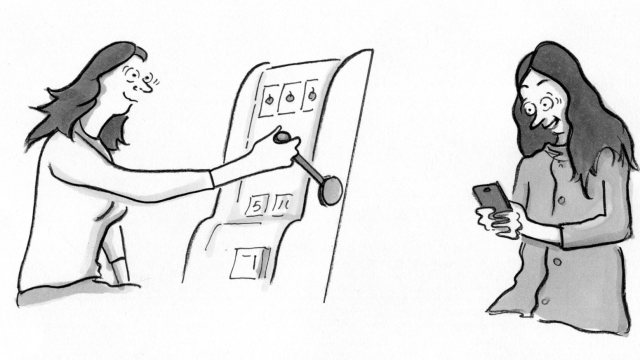Why It’s So Hard to Disrupt the Textbook Industry

You’d think in the age of Uber and Airbnb someone would have figured out how to put Big Textbook in its place. Unfortunately, it’s a lot more complicated than just waving a magical disruption wand and making course materials both affordable and easy to use. Here’s why:
The need for disruption
The modern tech-driven market has a nifty way of doing away with archaic conventions. It’s called disruption, and you’ve probably heard of it. If not, the easy example is the taxi industry. Riding in a taxi was lousy before ridesharing forced the industry to up its game. Now it’s easy to hail a cab with your smartphone, pay with a credit card, and accomplish other consumer-friendly tasks.
Below, Vivek Wadhwa on the power and future of tech disruption.
The textbook market, with its rising costs and dependence on dying technologies, has long been ripe for disrupting. Unfortunately, there are several major limitations preventing this.
Ease and affordability
Disruptive technology needs to act on a commodity already in existence and somehow make it easier to access at an agreeable price. Think of how Netflix absolutely plowed through the existing movie-rental industry by cutting out the trip to Blockbuster, or how digital music services put record stores out of business. The eventual textbook disruptor has an uphill climb because, with regard to ease of use, it’s hard to compete with dead trees.
“The physical textbook is not going away,” says Sara Leoni, CEO of Rafter, a course materials-management company. Leoni doesn’t believe students are beholden to their physical books, just that they’re not blown away by the current slate of alternatives. “Students are expecting there to be more technology to be used on campus than what they’re seeing.”
“The innovation required for textbooks is far beyond what most companies are doing,” writes Gagan Biyani, founder of the online learning platform Udemy. For disruption to occur, innovators have to find a way to create educational content that surpasses the old-fashioned pragmatic textbook.
Studies show students still prefer physical texts to e-books, and it’s not difficult to see why. After all, it’s not easy to notate an e-book.
Below, author Margaret Atwood on why dead trees are awesome.
What about open source?
Advocates of open-source textbooks say they’ve got the answer. All it takes to render the industry null, they argue, is for one organization to compile a textbook composed of publicly available information and creative commons media, and then make the text available online for free. Cost-conscious professors across the country have been taking advantage of open-source materials for years, many of them arguing that it was the future.
But there are obstacles to instituting open-source curricula. As the Associated Press‘ Michael Melia writes, “hurdles include awareness among faculty members and the still-limited availability of material for courses that go beyond introductory levels.” Melia also notes that going open-source creates more work for instructors. Part of the appeal of commercial textbooks is the ease of teaching the material for faculty members who are more focused on their research than their students.
All that said, if some magnanimous philanthropist really wants to make an impact on the world of higher education, all she has to do is commission a series of textbooks for free release. If you can remove the money incentive from the distribution of textbooks, you can help students refocus on learning, and less on how they’ll afford it.
Image credit: Alex Oakenman / Shutterstock
**
Robert Montenegro is a writer and dramaturg who regularly contributes to Big Think and Crooked Scoreboard. He lives in Washington DC and is a graduate of Loyola Marymount University in Los Angeles.
Twitter: @Monteneggroll. Website: robertmontenegro.com.




